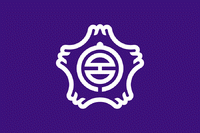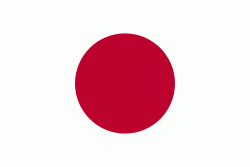Fujinomiya (Fujinomiya)
 |
 |
The city name comes from the former shrine name of Fujisan Hongū Sengen Taisha, "Fujinomiya". It is an ancient settlement that developed as a properous toriimae-machi (town in front of torii) of Fujisan Hongū Sengen Taisha, where the Fuji clan served as the high priest of the shrine. Nearby is the sanctuary of Taiseki-ji temple, founded in 1290 by Nikkō Shōnin as the headquarters of Nichiren Shōshū Buddhism.
Fujinomiya is closely related to Mount Fuji, and was located in the crossroad of Ōmiya and Murayamaguchi mountain pilgrimage trails. During the Kamakura period, the hunting event Fuji no Makigari arranged by shogun Minamoto no Yoritomo was held in the ancient region of Fujino, where the Revenge of the Soga Brothers incident also took place. These events were disseminated as historical materials such as Ōrai Mono (historical primary education textbooks created mainly in the form of letters), and as the subject of entertainment such as kabuki, noh, and jōruri.
Fujinomiya was a post town (fortified during the Sengoku period) on the primary route connecting Suruga with Kai Province. During the Edo period, the area was tenryō territory under direct control of the Tokugawa shogunate. British consul Sir Rutherford Alcock made the first recorded ascent on Mount Fuji by a non-Japanese person from Fujinomiya in 1860. During the cadastral reform of the early Meiji period in 1889, the area was reorganized into Omiya Town and eight villages with Fuji District, Shizuoka.
On 1 June 1942, the modern city was established with the merger of Omiya town with neighboring Fujioka village. The city expanded by annexing neighboring Fujine village in 1955, and Kitayama, Shiraito, Kamiide and Ueno villages in 1956.
From 1987, Aum Shinrikyo had their headquarters in the city.
The most recent merger was on 23 March 2010, when the town of Shibakawa (from Fuji District) was merged into Fujinomiya.
Map - Fujinomiya (Fujinomiya)
Map
Country - Japan
 |
 |
| Flag of Japan | |
Japan is the eleventh most populous country in the world, as well as one of the most densely populated and urbanized. About three-fourths of the country's terrain is mountainous, concentrating its population of 124.8 million on narrow coastal plains. Japan is divided into 47 administrative prefectures and eight traditional regions. The Greater Tokyo Area is the most populous metropolitan area in the world, with more than 37.2 million residents.
Currency / Language
| ISO | Currency | Symbol | Significant figures |
|---|---|---|---|
| JPY | Japanese yen | ¥ | 0 |
| ISO | Language |
|---|---|
| JA | Japanese language |















